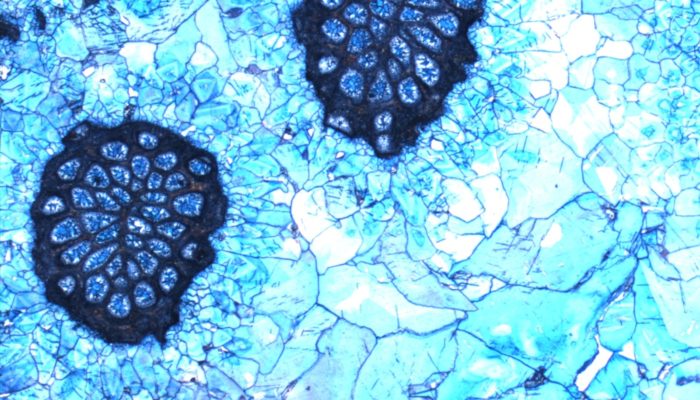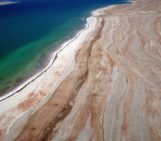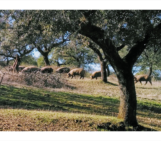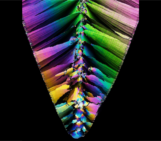
Staining of thin sections and rock slabs is a method of identification that has long helped researchers to distinguish certain minerals which often otherwise appeared very similar. Modern studies have now largely replaced this method of identification with more analytical techniques that usually provide a higher degree of certainty, such as analysis with a microprobe or Scanning Electron Microscope. However, despite the higher degree of certainty these technologies provide, the fact remains that they are often expensive and not always readily available, thus staining remains an option for researchers looking for a fast, cheap and easy method to indicate the presence of certain minerals – especially in the field. This image shows Bathonian bryozoals and calcitic cements precipitated from several phases of ferrous fluid palaeocirculations, sampled from Normandy in the Paris Basin, France. Staining was performed following the Dickson’s method (Dickson, 1966).
Photo by Remi Charton shared on imaggeo.egu.eu.
Imaggeo is the EGU’s online open access geosciences image repository. All geoscientists (and others) can submit their photographs and videos to this repository and, since it is open access, these images can be used for free by scientists for their presentations or publications, by educators and the general public, and some images can even be used freely for commercial purposes. Photographers also retain full rights of use, as Imaggeo images are licensed and distributed by the EGU under a Creative Commons licence. Submit your photos at http://imaggeo.egu.eu/upload/.




